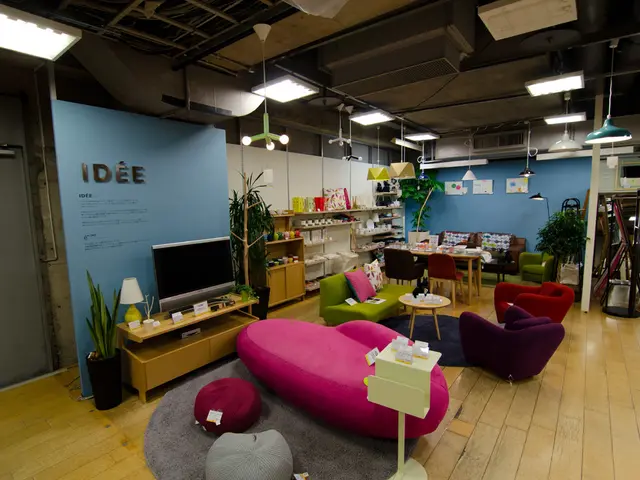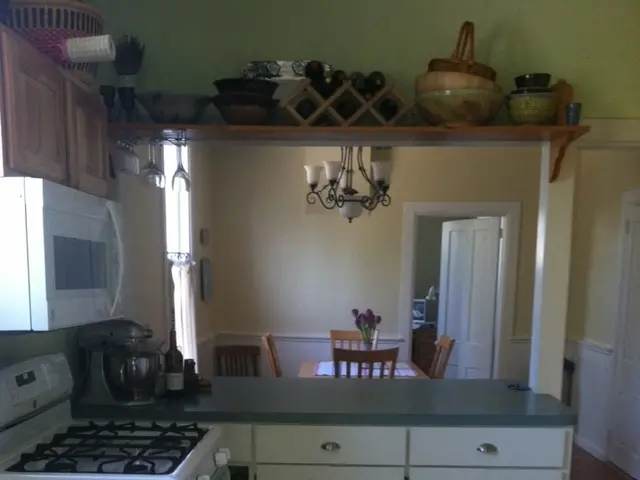Estimated Expenses for Constructing a Dining Establishment
Building a restaurant is an exciting venture, but it comes with a significant financial commitment. To ensure a successful launch and thrive in a competitive market, proper planning and budgeting are essential.
Key Cost Components and Factors to Consider
Location
Location plays a crucial role in the cost of building a restaurant. Urban locations, with their high foot traffic, usually have higher real estate, rent, and construction costs than suburban or rural areas. Market conditions, customer density, and competition will influence not just cost but also profitability and optimal size.
Design and Size
The design and size of your restaurant are another significant factor in the cost. As a general rule, it's recommended to allocate about 12 square feet per customer for seating, not including kitchen and workspace. Balancing capacity for revenue generation against ongoing operational costs is essential. New construction often costs more upfront than renovating an existing space but offers more design flexibility.
Construction and Renovation
The cost of construction and renovation can vary significantly. Building from scratch can have substantial construction costs due to factors such as size, quality of materials, and complexity of design. On the other hand, remodeling an existing space can be a more cost-effective option, but the extent of renovations needed will significantly impact the overall cost. Modular or shipping container solutions can reduce labor and construction time, lowering capital expenses by up to 50%.
Equipment and Furnishings
The cost of kitchen equipment, furniture, fixtures, and decor can range from $312,000 to $480,000 or more for mid-size full-service restaurants. Technology investments, such as point of sale systems, security cameras, and software, add about $53,000 to $99,000. Build-out costs for kitchen equipment, furniture, and POS systems generally run from $75,000 to $200,000 for small restaurants.
Additional Expenses
Initial inventory (food and beverage stock), pre-opening expenses (staff training, marketing, licenses), and working capital to cover the first three months of operations should also be budgeted. Additional costs beyond construction and restaurant renovation include permits, technology (such as POS systems), and security deposits, signage, and utilities.
The Average Cost to Build a Restaurant
The average cost to build a restaurant typically ranges widely, depending on factors such as size, location, concept, and construction type. It often falls between $100 and $800 per square foot. For context, a conventional restaurant can cost from about $275,000 to $1,000,000 or more to build, with modular or alternative builds possibly reducing costs by up to 50%.
In summary, opening a restaurant requires a comprehensive budget accounting for location-driven real estate costs, design and construction fees, extensive equipment and technology purchases, and working capital for initial operations. Small or quick-service restaurants typically have lower startup costs (around $150,000–$350,000), while full-service and fine dining restaurants often exceed $500,000 to $1 million in initial investment. Balancing spatial requirements, build quality, and operational needs is vital to optimize both upfront costs and long-term profitability.
[1] Restaurant Engine
[2] Freddy's Franchise Costs
[3] Restaurant.com
[4] Modular Restaurant Construction
[5] Restaurant Startup Costs
In light of the financial commitment required to build a restaurant, carefully considering the cost components is crucial for maintaining a balanced lifestyle and ensuring a profitable business. This includes location costs, design and size considerations, construction expenses, equipment and furnishings, and additional expenses such as initial inventory and pre-opening costs [1][2][3][4][5]. Moreover, for those seeking to integrate a restaurant venture into their home-and-garden portfolio, understanding the financial implications is essential to maximize both one's personal finances and overall business success.




